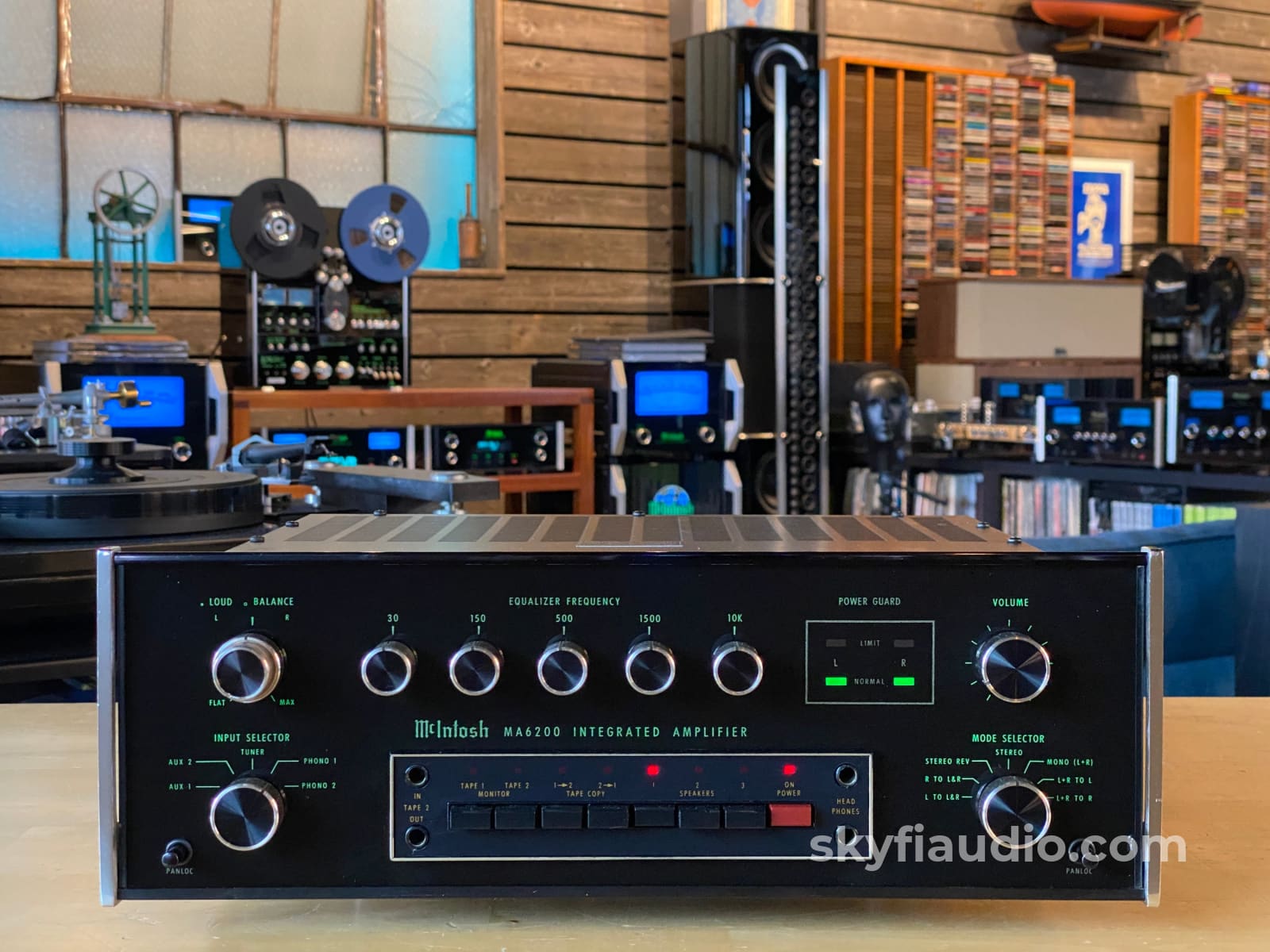
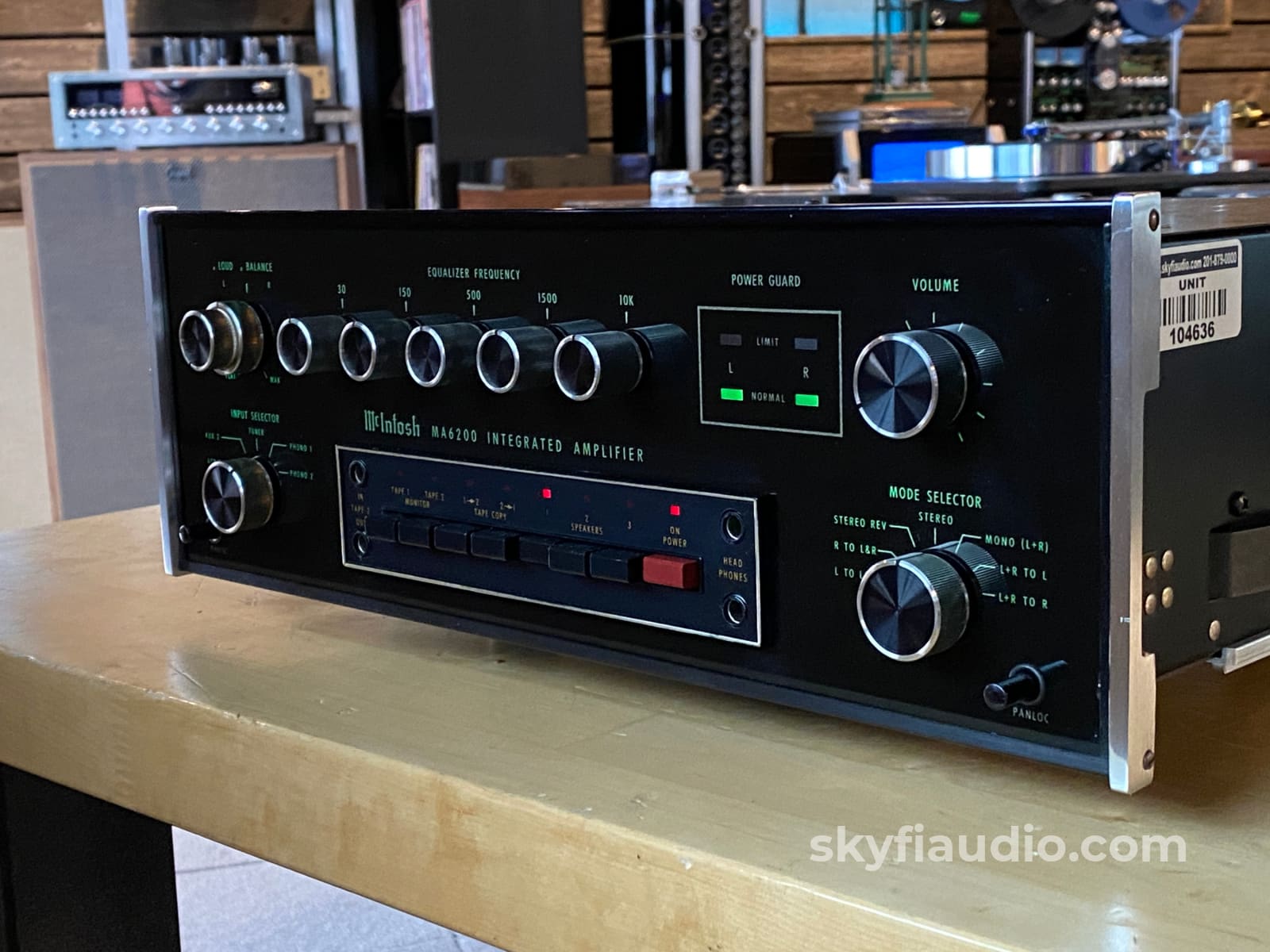
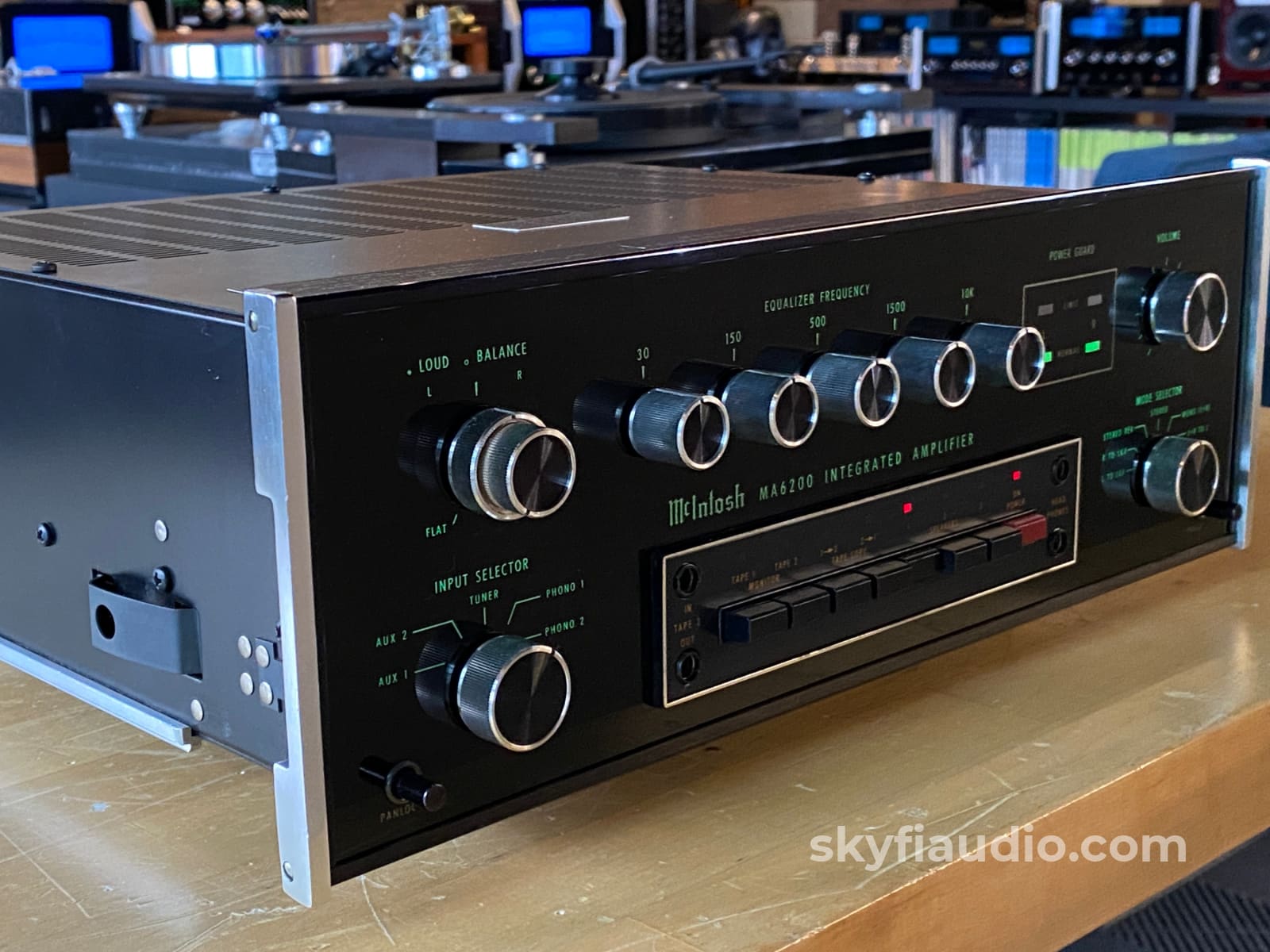
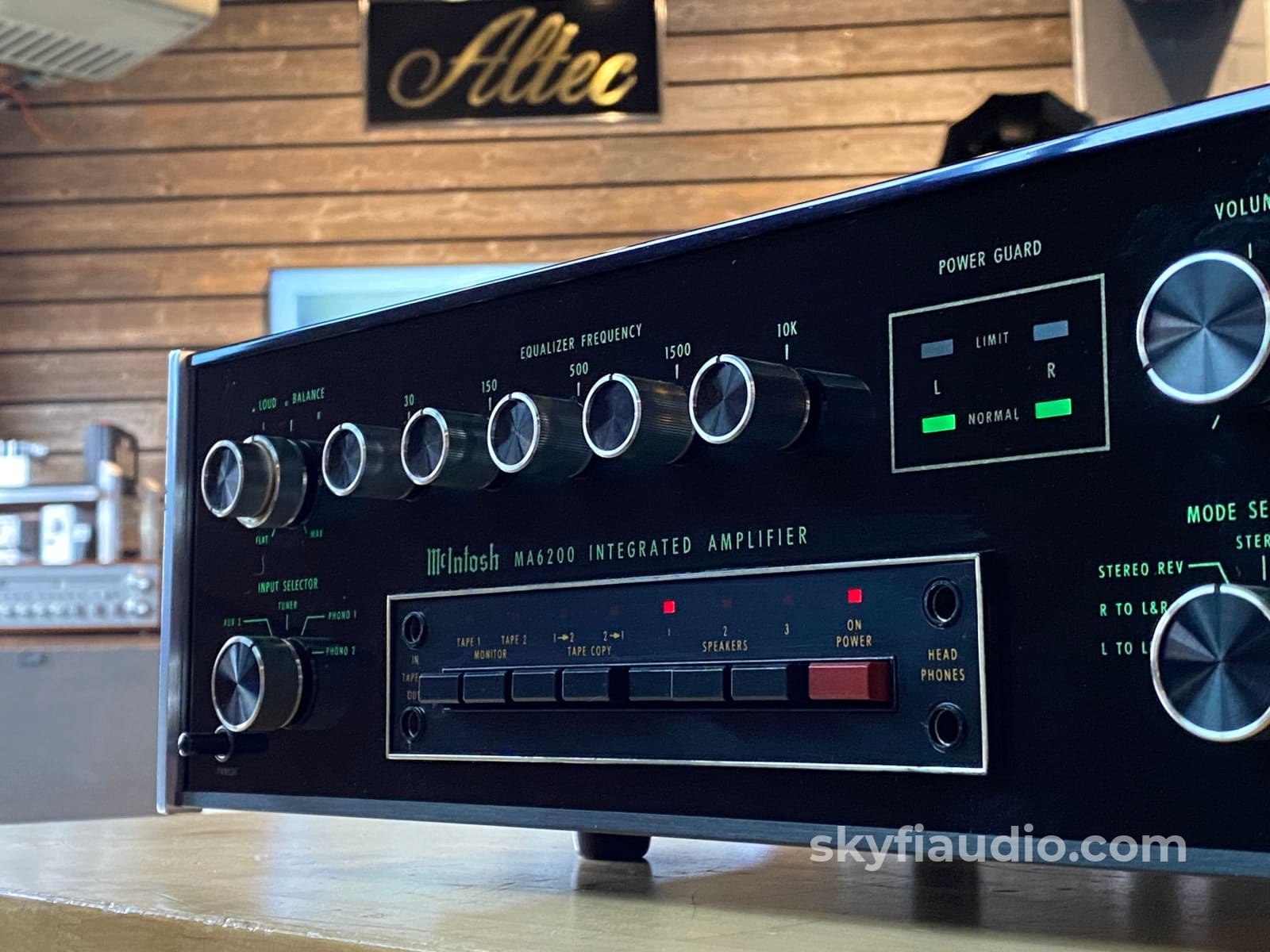
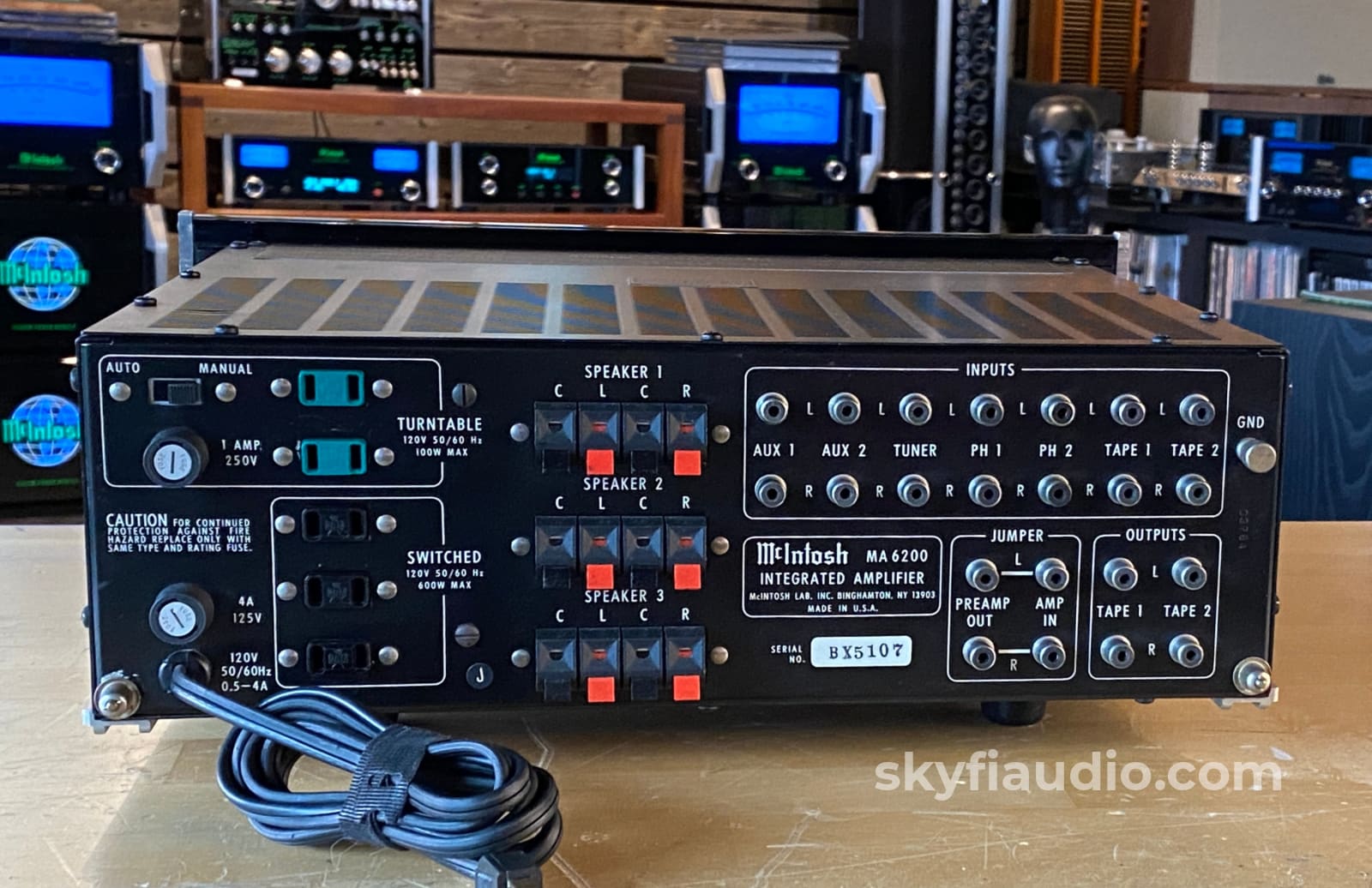
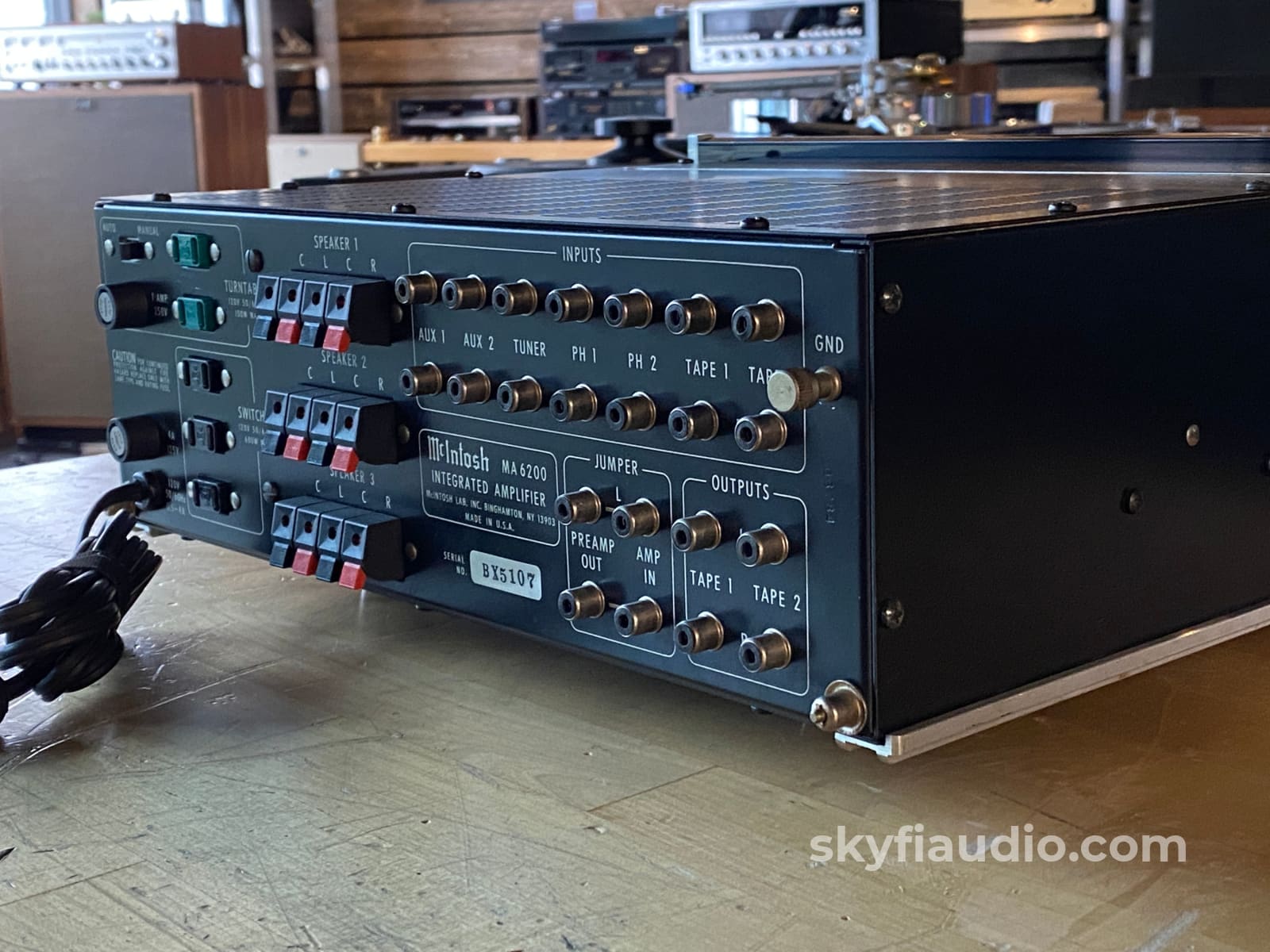
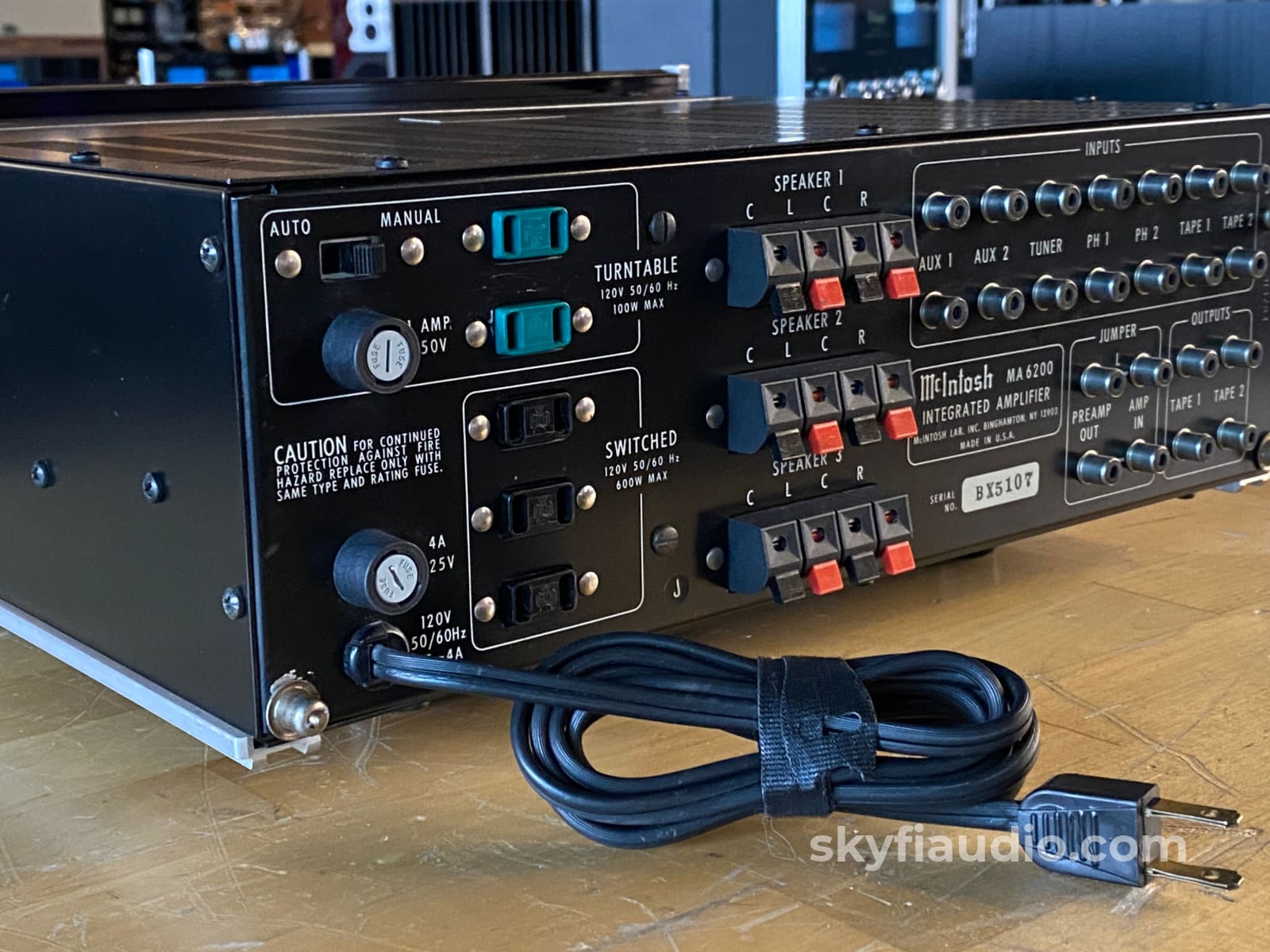
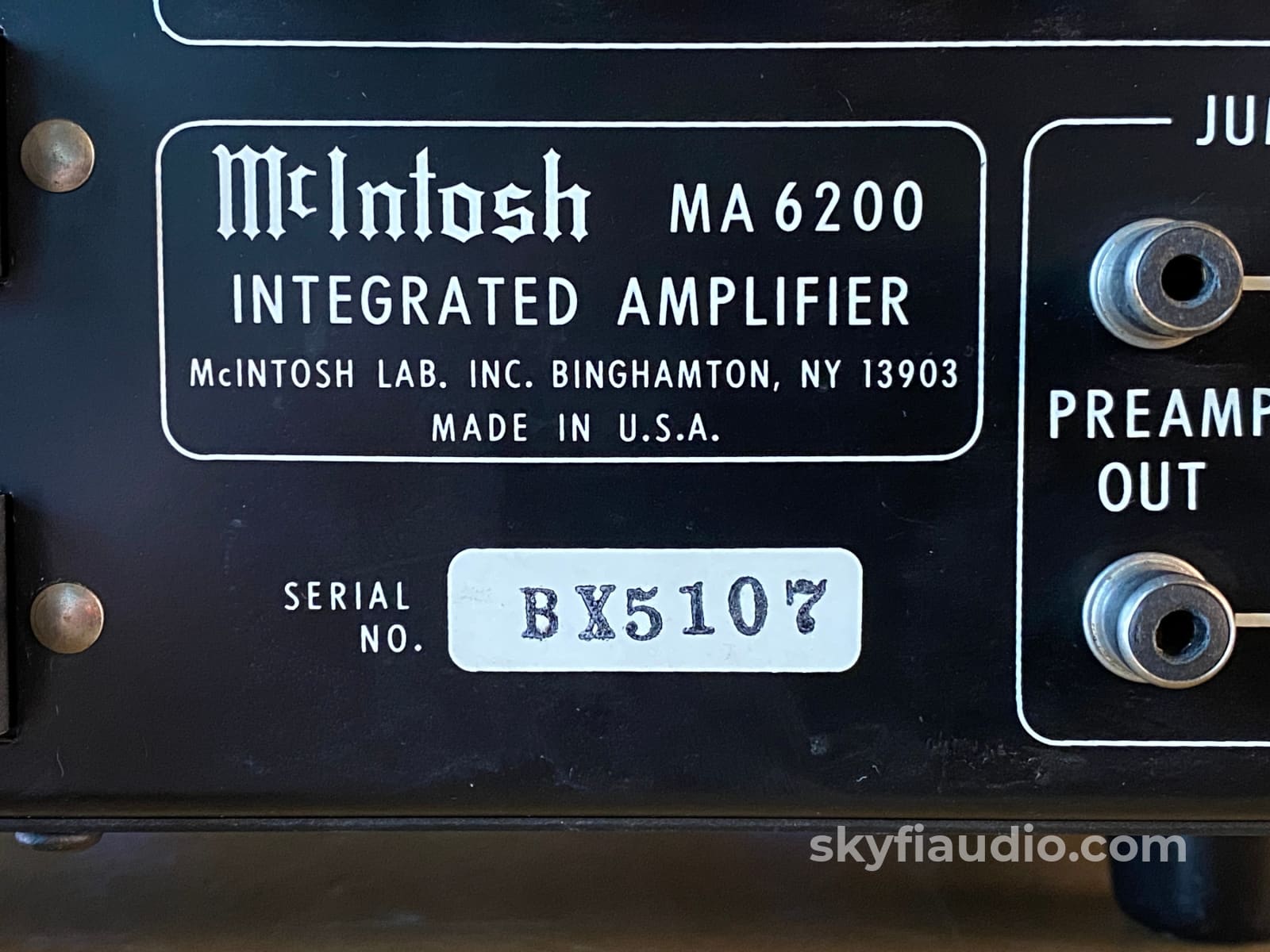
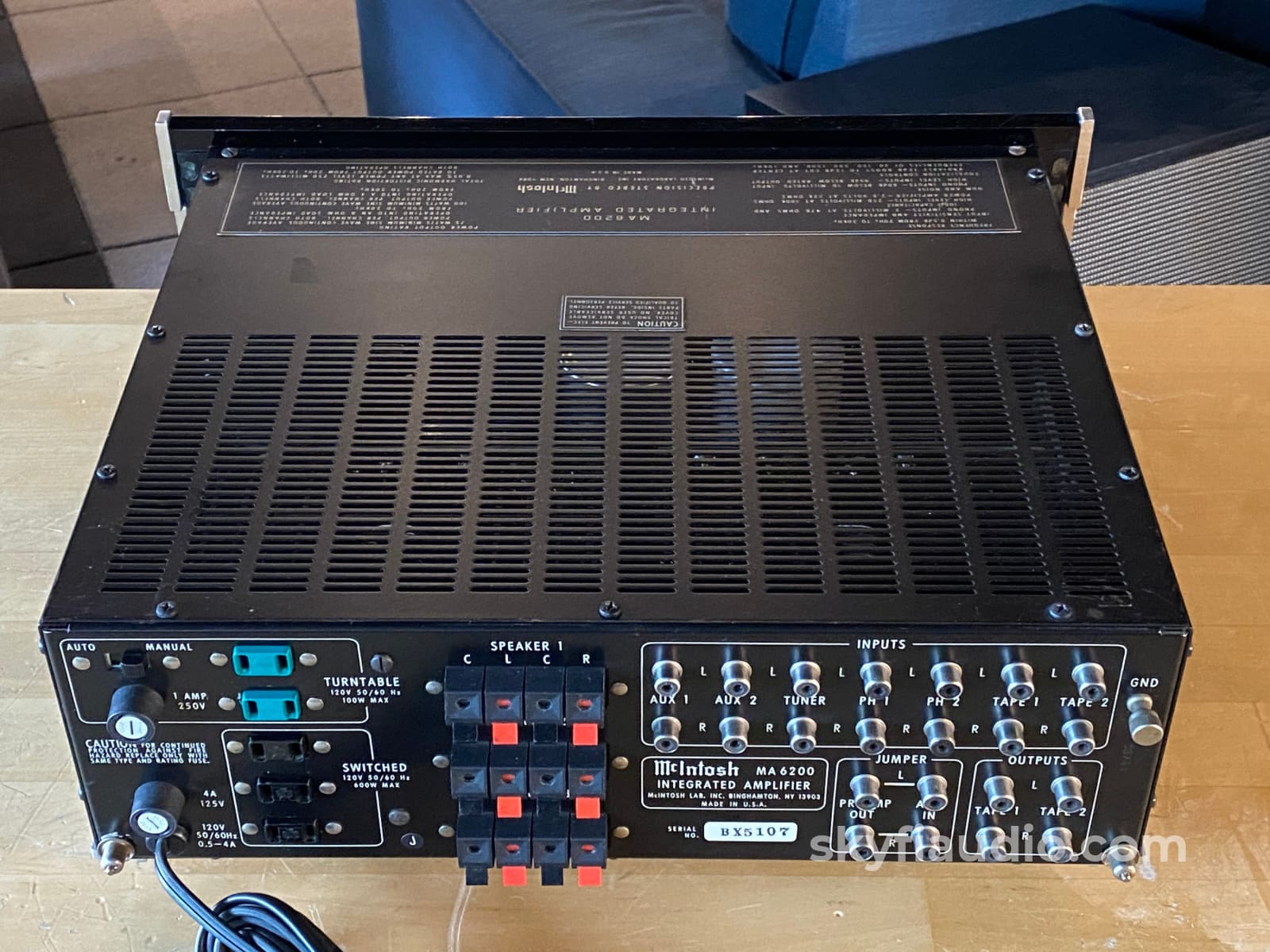
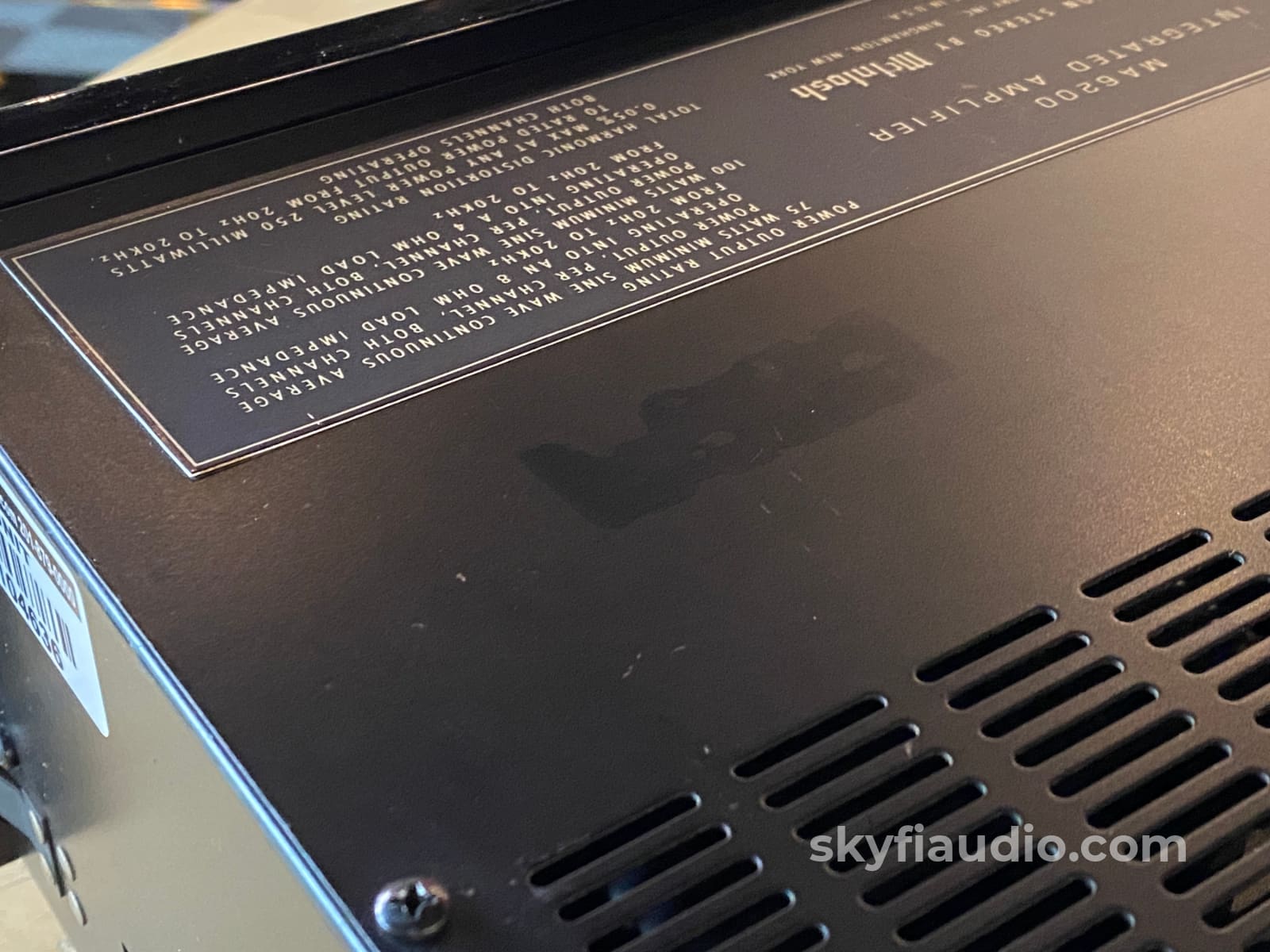
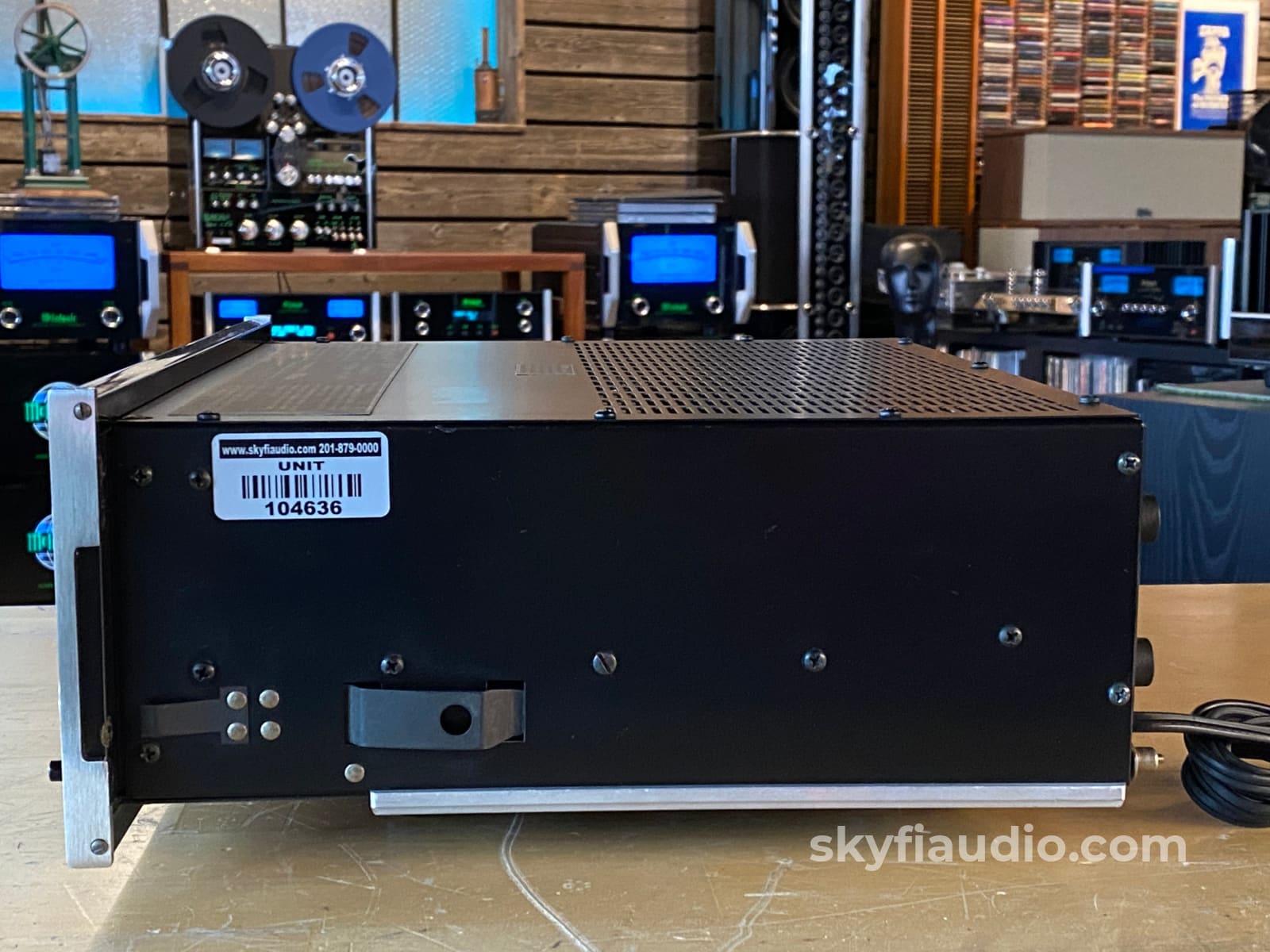
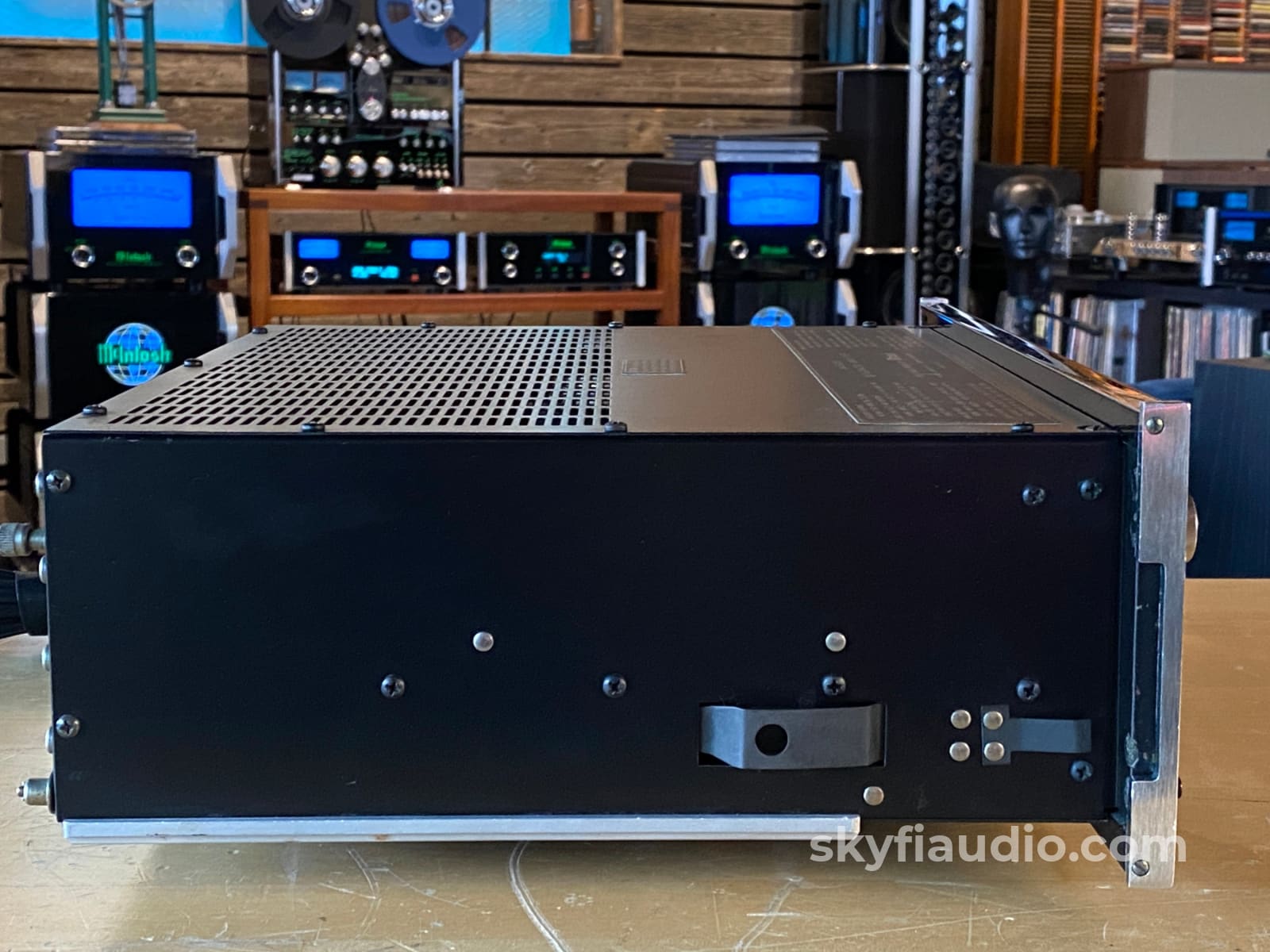
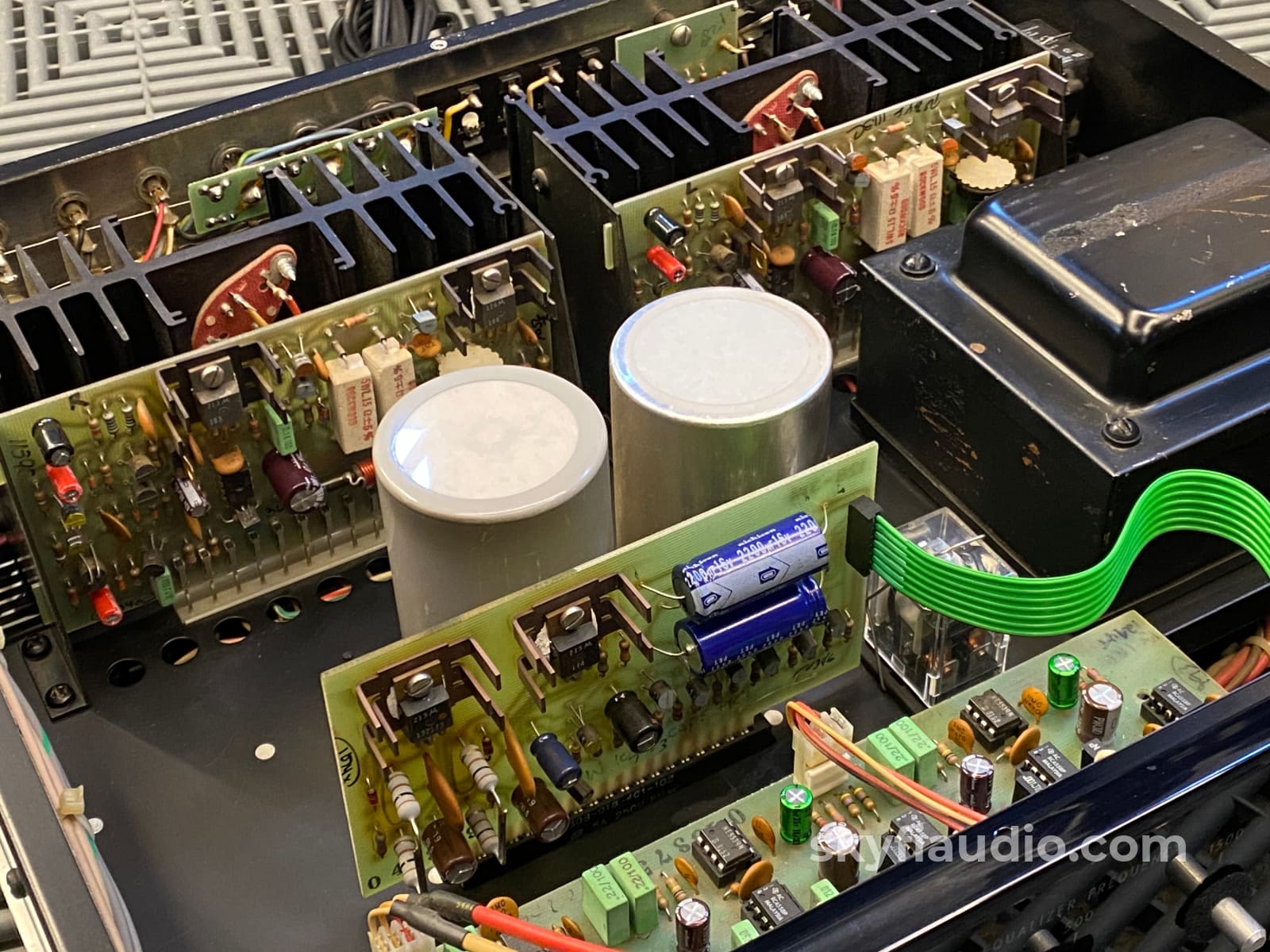
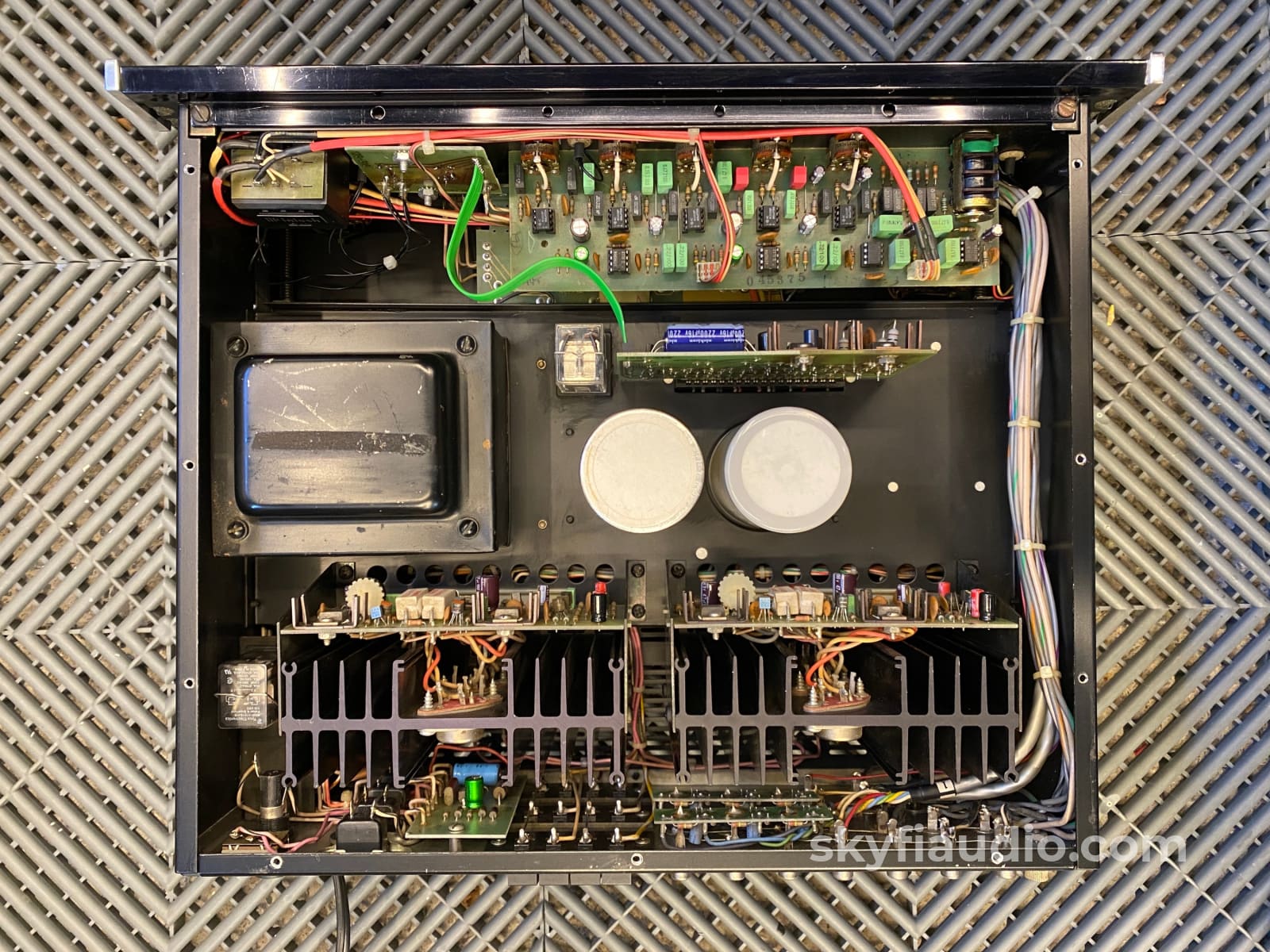
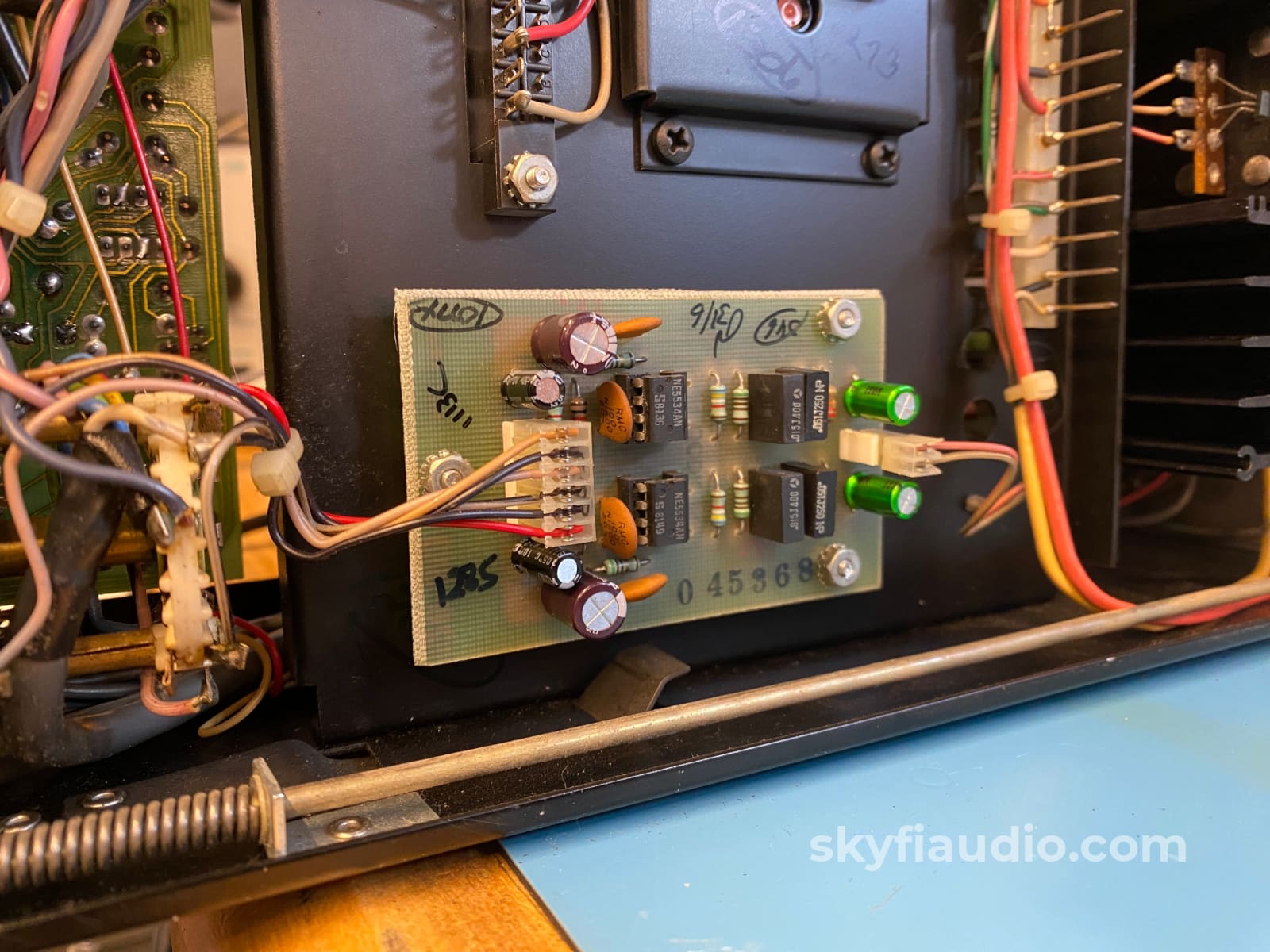
McIntosh MA6200 Vintage Integrated Amplifier - Serviced
Free Shipping on Most Electronics - Excludes Speakers and Items Requiring Freight - Contiguous U.S. Only
Pickup currently unavailable at SkyFi 479

McIntosh MA6200 Vintage Integrated Amplifier - Serviced
SkyFi 479
479 South Broad Street
Glen Rock NJ 07452
United States
General:
Rather rare integrated amp from McIntosh. We were impressed by the features, design, and great looks.
Integrated amplifiers are very desirable these days and we rarely have more than one or two in stock. It was great to see a McIntosh integrated come in, especially from this era which is rare. We mostly see models from the 2000's on.
Great features include a built-in 90W amplifier with that signature sweet McIntosh sound, a very capable 5 band equalizer, McIntosh Power Guard, dual phono inputs, dual tape loops, and loudness control.
This example is super clean with little signs of use which is reflected in the price. It was obviously well cared for, as it's not suffering from the typical pitting or light rusting we usually see from moisture exposure. It even arrived in great working condition which required only the slightest intervention from our tech.
A true testament to McIntosh and their design/build quality found even today. And still made right here in New York!
If you want to complete the vintage look with a proper McIntosh wood cabinet we can include one as long as we have one in stock. Call or message us for details.
Cosmetic Notes:
Light chips are present in the glass on the far right and bottom right corner. Scuffs and marks on metal covers, side panels, and faceplate trim.
Note - The original McIntosh preout/main in jumper cables are currently installed and are no longer available. In their place we will supply a set of high quality jumpers.
SkyFi Service Notes:
This unit was previously serviced in 2014. Select capacitors were replaced, relays cleaned, and a replacement ribbon cable for the normal/powerguard lamps installed at that time. We took the servicing one step further by replacing all of the remaining electrolytic capacitors on the power supply, tone, phono stage, and amplifier boards. All lamps have also been verified working. All controls were re-cleaned and checked for proper operation.
Brand Background:
McIntosh Laboratory is an American manufacturer of handcrafted high-end audio equipment based in Binghamton, New York. The company was founded in 1949 by Frank McIntosh. The company designs and produces audio amplifiers, stereo tuners and other consumer electronics products.
Ownership:
Unknown
Connections:
RCA Inputs and outputs, captive power cord, convenience power outlets. Spring speaker terminals.
General Sound:
Accurate to the recording
Cosmetic Condition:
7/10 = Good. One or two minor scratches. Well Maintained. See our detailed rating description here.
Working Condition:
Working perfectly and tested in our lab and listening room.
Included:
Just the unit and power cord.
Recommended Cables:
Kimber Kable - RCA Interconnects - Better
Kimber Kable - RCA Interconnects - Best
Kimber Kable - Phono Interconnects - Better
Kimber Kable - Flagship Tonearm Interconnects - Best
Kimber Kable - Speaker Cables - Good
Kimber Kable - Speaker Cables - Better
Kimber Kable - Bi-Wire Speaker Cables - Best
Packing:
Will be packed using our highly developed in-house process and custom packing materials.Specs:
Type Pre-main amplifier
Power Amplifier Unit
Effective output (20 Hz to 20 kHz) 75W + 75W (8 Ω, THD 0.05%)
100W + 100W (4 Ω, THD 0.05%)
Input Sensitivity / Impedance 2.5V/22k Ω
Speaker switching A, B, C
Total harmonic distortion factor 0.05% (0.25W ~ Effective Output, 20 Hz ~ 20 kHz)
Cross modulation distortion factor 0.05% (whole output band, whole circumference fraction)
Frequency characteristic 20 Hz ~ 20 kHz + 0 -0.5 dB
Signal-to-noise ratio 100dB
Damping factor 30
Control Amplifier Section
Input Sensitivity / Impedance Phono1, 2 : 2mV/47k Ω
Tuner, Aux1, 2, Tape1, 2 : 250mV/100k Ω
Output Level / Impedance Rec out:0.25V
Signal-to-noise ratio Phono:80dB
Aux, Tape : 95 dB
Tone control 5-element program equalizer
Center Frequency : 30 Hz, 150 Hz, 500 Hz, 1.5 kHz, 10 kHz
Each ± 12 db variable
Loudness control Continuously variable
Tape monitor Route 2
Tape copy 1 → 2, 2 → 1
Mode selector 7-point switching
Premain separation Possible
GENERAL
Pwer 100 VAC, 50Hz/60Hz
AC outlet Turntable interlock : 2 systems
Power switch interlock : Route 3
Power consumption 400W maximum
Dimensions:
Width 15.98" x Height 5.43" x Depth 12.99"
Weight:
30 lbs.
Approximate Age:
1978
Link to Manual:
Click Here
The SkyFi Testing Process for Integrated Amplifiers:
We start with a visual inspection of all internal components to make sure that there are no signs of heat stress or damage. Capacitors are checked for telltale signs of predictive failure including bulging, shrunken wrappers, or physical leakage. We also inspect the PCBs for discoloration from resistors or transistors that may have been running hot. On vintage units we often spot check select capacitors for value and ESR.
If the device has the ability to decouple the preamplifier from the power amplifier, we remove the jumpers and independently test each section. If the device cannot be decoupled, we assess the electronic condition of the piece by analyzing the speaker level output only.
We start by connecting the “preout” jacks of the integrated to a Sencore PA81 Power Analyzer which simulates real world loading conditions and gives us an oscilloscope interface. The first order of business is checking that the volume control works smoothly throughout its entire range with acceptable channel balance. This is accomplished by feeding a 1KHz sine wave into one of the preamp’s line level inputs while monitoring the preamp’s output on an oscilloscope. We then switch to a 1KHz square wave to test the tone controls, loudness function, and filters where applicable. During this step we are watching for equal alteration of the test signal by both channels. This also helps us identify dirty controls that will need treatment. Once the basic line stage functions are verified, we test each input individually. This is especially important for devices that use relays to select their sources. If the preamp section is equipped with a phono stage we test that as well. We use an inverse RIAA filter which allows us to feed a reference test signal into the phono input with the proper RIAA equalization and level. A square wave or sine sweep is used to verify that the device’s phono stage is faithfully reproducing the RIAA curve.
Next, we test the power amplifier section by connecting the integrated’s speaker outputs to a Sencore PA81 Power Analyzer which acts as a dummy load, DC offset monitor, and oscilloscope interface. We start with a low level 1KHz test signal at the “main in” jacks and slowly increase its amplitude while monitoring the output on an oscilloscope for signs of noise, clipping, distortion, or improper channel balance. We continue increasing the signal level until the amplifier reaches clipping. At this point we take an output power measurement and compare it to the spec sheet of the amplifier to verify proper performance.We finish off the bench evaluation with a 1KHz square wave check and a 20Hz to 20KHz sine sweep to assess the amplifier’s frequency response characteristics. This battery of tests will usually reveal if the amplifier has any issues that need further attention.
If the preamp and power amp both pass these tests, we reconnect the sections and verify that the preamp section can drive the power amp to rated power with a 1KHz tone on one of the line level inputs.
Before the device leaves the bench, we perform a listening test with actual music using a variety of preferred test tracks. Our benches are outfitted with familiar monitor speakers which help us identify inconsistencies that will not always show up on our test gear. The main things that we are listening for are hum or noise with no signal present, proper center image, clicks, pops, or any other obvious undesirable audio characteristics.
If the unit passes all of these tests it is moved to our long term testing rig where we simulate real word operating conditions for 6-8 hours. This allows us to monitor the unit for signs of thermal runaway or intermittent issues that only crop up when the unit has fully come up to temperature.
Choose options















